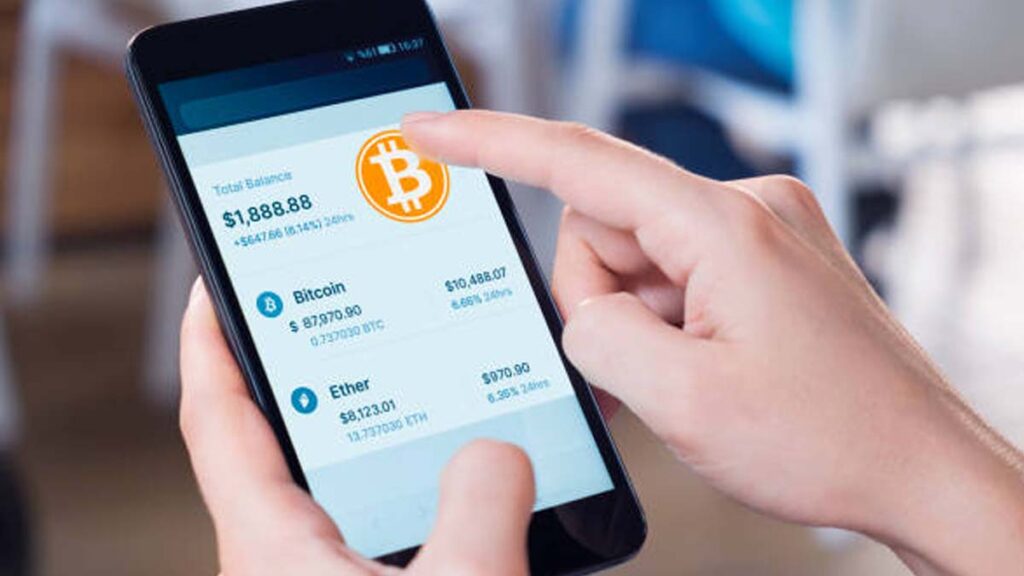How Cryptocurrency Exchange Works. Ever wondered how you can buy Bitcoin or other digital currencies? Cryptocurrency exchanges are the online marketplaces that make it all possible. These platforms act like middlemen, connecting buyers and sellers of cryptocurrencies. Similar to a stock exchange, they allow users to trade digital assets with each other, often for fiat currency (traditional money like USD or EUR) or other cryptocurrencies.

Cryptocurrency exchanges are the marketplaces where you can buy, sell, and trade digital assets like Bitcoin, Ethereum, and others. They function similarly to stock exchanges, but instead of stocks, they deal with cryptocurrencies. This guide dives into the workings of cryptocurrency exchanges, making it easier for you to navigate this exciting yet complex financial landscape.
What is Cryptocurrency?
Before diving into exchanges, let’s establish a basic understanding of cryptocurrency. Unlike traditional currencies controlled by governments, cryptocurrency is digital and decentralized. It operates on a blockchain, a secure, distributed ledger recording all transactions transparently. Bitcoin, the most famous cryptocurrency, is just one example.
The Role of Cryptocurrency Exchanges
Cryptocurrency exchanges function as online marketplaces where users can buy, sell, and trade cryptocurrencies. They act as intermediaries, connecting buyers and sellers and facilitating smooth transactions. Think of them as stock exchanges, but specifically for digital assets.
Understanding Cryptocurrency Exchanges
Centralized vs. Decentralized Exchanges (CEXs vs. DEXs): There are two main types of crypto exchanges:
Centralized Exchanges (CEXs)
These are the most common types, acting as intermediaries between buyers and sellers. They hold user funds and cryptocurrencies, ensuring a smooth trading experience. Popular CEXs include Coinbase, Binance, and Kraken.
Decentralized Exchanges (DEXs)
DEXs operate on a peer-to-peer (P2P) basis, without a central authority. Users trade directly with each other, offering greater control over their funds but often with a less user-friendly interface. Examples of DEXs include Uniswap and SushiSwap.
Order Book & Matching Engine
CEXs utilize an order book system. Users place buy and sell orders at specific prices. The matching engine then pairs these orders to facilitate transactions.
Trading Options
Exchanges offer various trading options, including:
- Spot Trading: Buying and selling cryptocurrencies at the current market price.
- Margin Trading: Borrowing funds from the exchange to amplify potential gains (and losses).
- Limit Orders: Specifying a desired price to buy or sell at.
- Fees: Cryptocurrency exchanges charge fees for various services, including trading fees, deposit/withdrawal fees, and inactivity fees. Be sure to compare fees before choosing an exchange.
Benefits of Using a Cryptocurrency Exchange
Cryptocurrency exchanges offer several advantages that make them attractive to those interested in the digital currency market. Here are some key benefits:
Convenience and Accessibility
Exchanges provide a user-friendly platform to buy, sell, and trade cryptocurrencies. This eliminates the complexities of finding individual buyers or sellers, making it easier to participate in the crypto market.
Liquidity
Exchanges have a large pool of buyers and sellers, ensuring that you can easily find someone to match your trade. This liquidity is crucial, especially for less popular cryptocurrencies, where finding a direct counterparty might be difficult.
Security
Reputable exchanges invest heavily in security measures to protect user funds and transactions. This includes secure storage of crypto holdings and encryption protocols to safeguard sensitive information.
Variety of Cryptocurrencies
Many exchanges offer a wide range of cryptocurrencies, allowing you to invest in a diversified portfolio of digital assets. This gives you greater flexibility in your investment strategy.
Additional Features
Some exchanges provide additional features beyond basic trading, such as margin trading (borrowing funds to amplify gains), staking (earning rewards for holding certain cryptocurrencies), and educational resources to help users learn more about the crypto market.
Step-by-Step Guide to Using a Cryptocurrency Exchange
- Choose a Reputable Exchange: Research and select an exchange with a strong reputation, security measures, and features that suit your trading needs.
- Create an Account: Go through the exchange’s signup process, which typically involves providing personal information and ID verification.
- Fund Your Account: Deposit funds into your exchange account using supported methods like bank transfer or wire transfer. Some exchanges allow deposits in fiat currency (government-issued money), while others require prior ownership of cryptocurrency.
- Start Trading: Navigate the exchange’s interface to buy, sell, or trade cryptocurrencies. You can choose your preferred order type (market or limit) and specify the amount you wish to trade.
- Withdraw Funds (Optional): If you want to convert your cryptocurrency back to fiat currency, initiate a withdrawal to your linked bank account (where supported).
Security Considerations When Using Cryptocurrency Exchanges
- Choose a Secure Platform: Opt for exchanges with robust security features like two-factor authentication and encrypted storage for user funds.
- Store Cryptocurrencies Safely: Consider storing your cryptocurrencies in a secure digital wallet for an extra layer of protection.
- Beware of Phishing Scams: Be cautious of emails or messages imitating legitimate exchanges. Never share your login credentials or private keys with anyone.
FAQs on Cryptocurrency Exchanges
Are cryptocurrency exchanges safe?
Security practices vary between exchanges. Reputable CEXs prioritize security with measures like secure logins, two-factor authentication, and cold storage for user funds. However, it’s crucial to choose a well-established exchange and practice good password hygiene.
What are the risks of using cryptocurrency exchanges?
Cryptocurrency markets are volatile, and prices can fluctuate significantly. Additionally, even secure exchanges can be vulnerable to hacks. It’s essential to understand the risks involved before investing.
How do I choose the right cryptocurrency exchange?
Consider factors like fees, security features, ease of use, and the variety of cryptocurrencies offered. Research different exchanges and compare their offerings before making a decision.
Conclusion
Cryptocurrency exchanges empower you to participate in the exciting world of digital assets. By understanding the different types, functionalities, and security considerations, you can navigate this space confidently. Remember, cryptocurrency remains a volatile market. Conduct thorough research, start small, and never invest more than you can afford to lose.